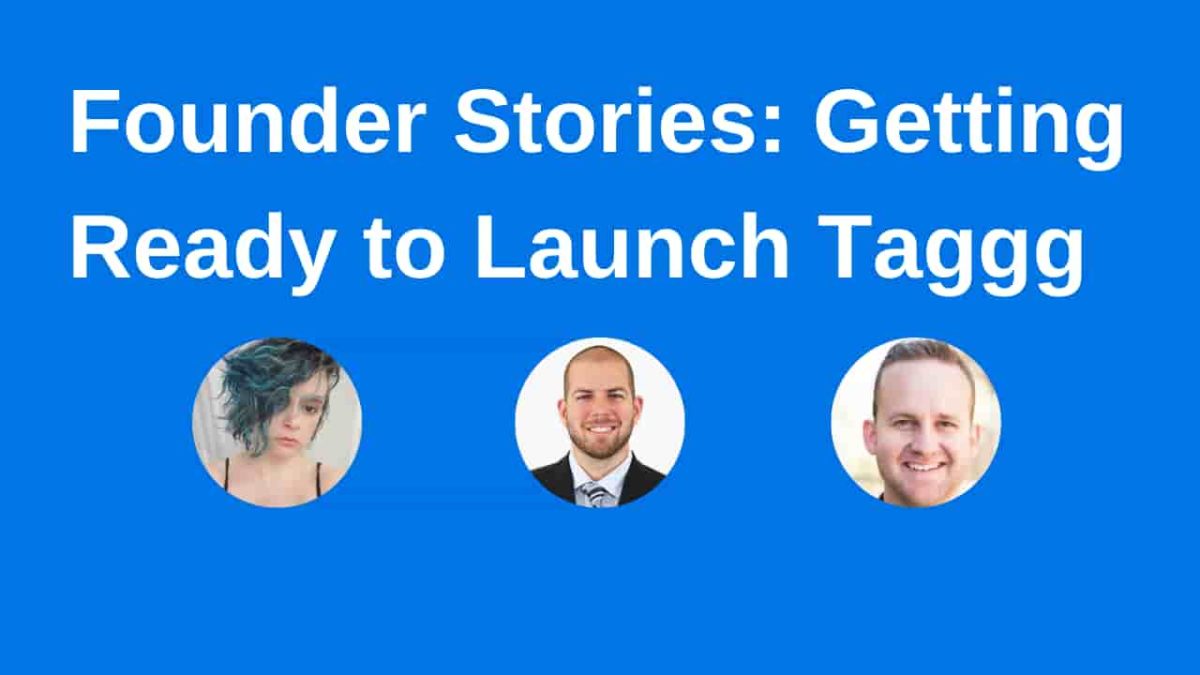Founder Stories: Getting Ready to Launch Taggg

Hi there, I’m Trevor 👋 I’m one of the founders of Taggg. In this article, founder stories Q&A getting ready to launch Taggg we go behind the scenes. We’ll share how we are building and thinking about a go-to-market strategy for Taggg.
What is Taggg and who are the founders?
Who are the founders of Taggg?
Nichole, Aaron, and I are the three co-founders.
How did you all meet?
We met organically through working together on different SaaS projects and growing our client’s products together.
What are the roles you all play in creating Taggg?
We each wear many hats as you can imagine, however, we could group our primary roles as:
- Aaron takes on user onboarding and customer engagement.
- Nichole takes on the acquisition and getting the word out right now.
- Trevor is the product manager and technical advisor and works directly with the development team.
What is Taggg?
Taggg is a software specifically designed to make scheduling group meetings easy.
The Ideation Phase
Who came up with the idea for Taggg?
It is my concept and was born out of the constant issue of scheduling meetings with clients, the Inturact team, and 3rd party contractors that each have different calendars and oftentimes use different calendar software.
Walk us through the thinking behind the problem/ creating value for users?
We leveraged the JTBD framework to uncover unmet needs within the space and come up with the top 3 needs in the space to concentrate our initial product development around:
- Minimize the effort when deciding what meeting times to suggest to multiple people
- Reducing the time it takes to reschedule canceled meetings
- Minimizing the effort to schedule meetings from your mobile device
As of now, we are concentrating wholly on #1 we will work on #2 and #3 after finalizing the core of the product with #1. We are solving this problem by leveraging what we call “calendar overlays” and letting multiple users see availability overlaid against their calendar to find times to meet that work for all parties.
What does customer discovery look like?
The biggest effort went into the initial JTBD research, but we also will be leveraging Canny.io for collecting feedback and InnerTrends.com to make data-driven growth decisions within our customer data.
Competition
How much emphasis/ thinking went behind competitor analysis (who are the competitors)
Believe it or not, we tried to ignore most of the competition. There are a ton of competitors in this space such as Calendly or Doodle. We think everyone has looked at scheduling in the same way and that is why so many tools function alike.
However, we have completely rethought what it looks like to schedule meetings from the top down. Meaning, we want to solve being able to schedule group meetings with multiple people first, and then solving for 1:1 meetings becomes simple. When you first frame solving for scheduling meetings in this way you begin to realize how many gaps there is that need filled in this space.
Roadmaps
What is a roadmap to you as founders (purpose and goals)?
At a high level, our roadmap aligns directly with our unmet needs:
- Minimize the effort when deciding what meeting times to suggest to multiple people.
- Reduce the time it takes to reschedule canceled meetings
- Minimizing the effort to schedule meetings from your mobile
We will be working through numbers #2 and #3 as soon as we prove value with #1.
How do you go about getting alignment and buy-in for roadmaps?
Again this is primarily based on talking to our ideal customers and understanding their unmet needs at this early stage. However, once we have customers it will be driven by new customer research still, but we will also look heavily into our user data to start to make data-driven growth decisions and build our roadmap based on customer engagement analytics within the product.
The Build – Founder Stories: Getting Ready to Launch Taggg
This has lived in my head for a while. We this something that people need from the start, however, we still backed up the hypotheses with research and actually uncovered insights that changed the direction of the product in regards to prioritization of features.
Talk us through what Alpha, Beta, and MVP mean to you?
We look at Alpha as our very close private network giving us feedback on our product. Then we look at Private Beta as a slightly more extended network of ours and from our private network.
Next, we will then move into a Public Beta stage as the first iteration that anyone can join the product. An MVP comes prior to all of these stages and we look at it in two parts. The first part is a clickable prototype. This is a low-cost way to make sure the concept is worth pursuing. From there you create the actual MVP which to us is a bare-bones product that concentrates on functionality over UX or UI
Founder Stories: Getting Ready to Launch Taggg
Walk us through the go-to-market strategy
W have a waitlist of 150+ people right now and have not been pushing this too hard as we have a very large network between the 3 of us. It is somewhat of an unfair advantage. We wanted to make sure we had a way for people truly interested in solving this problem to get early access as well though.
As of now, we will be in Alpha within our close network in November or December and private beta to our waitlist is looking like the beginning of 2021 at the moment.
Links
Check out Taggg.
We were recently on The Product Angle Show listen to our episode here.